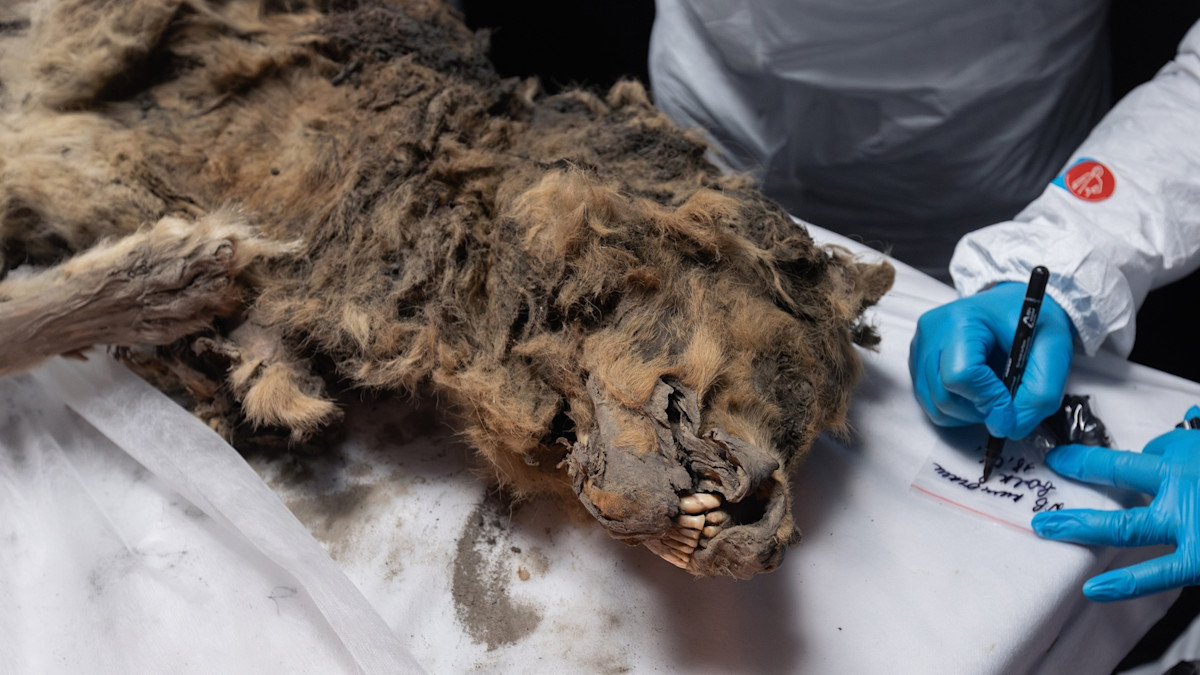
Receding permafrost has, once again, revealed a perfectly preserved relic of the ancient world. In 2021, Russian scientists pulled a mummified wolf from Siberian permafrost by a river in Yakutia. (That’s right, ice can mummify bodies in the right conditions.)
This is the first complete wolf ever discovered from the late Pleistocene. A necropsy was performed at North-Eastern Federal University in Yakutsk, the same university that investigated this permafrost-preserved bear from the Holocene.

Based on the wear of the teeth and the formation of the sagittal crest, scientists determined that the specimen was an adult male. They also removed a premolar to determine the animal's age at the time of its death.
So what exactly are researchers looking to learn from this wolfsicle? Incredibly, just one well-preserved specimen can provide an exceptional look into a time long ago, reaching species beyond wolves.
"His stomach has been preserved in an isolated form, there are no contaminants, so the task is not trivial," Albert Protopopov, head of the department for the study of mammoth fauna of the Academy of Sciences of Yakutia, said in a statement. "We hope to obtain a snapshot of the biota of the ancient Pleistocene."
The contents of the stomach will show scientists not only what the wolf was eating, but also what the prey it consumed was eating as well.

Additionally, the research project will attempt to expand their understanding of ancient microbial communities during this period.
"We see that in the finds of fossil animals, living bacteria can survive for thousands of years, which are a kind of witnesses of those ancient times," Artemy Goncharov of North-Western State Medical University in Russia said in a statement. "It is possible that microorganisms will be discovered that can be used in medicine and biotechnology as promising producers of biologically active substances," he added.
While this is the first adult wolf of this time era to be discovered from melting ice, five years ago, scientists found an 18,000-year-old wolf puppy and this 32,000-year-old wolf head, both preserved by permafrost. As the planet warms, it's likely that more of these unique specimens will surface.
The data is still being gathered and analyzed on this wolf specimen. But this distinctive discovery is sure to shed some light on what the Earth was like many millennia ago and perhaps even share some insights into the present and future of our planet.

Images via North-Eastern Federal University.




